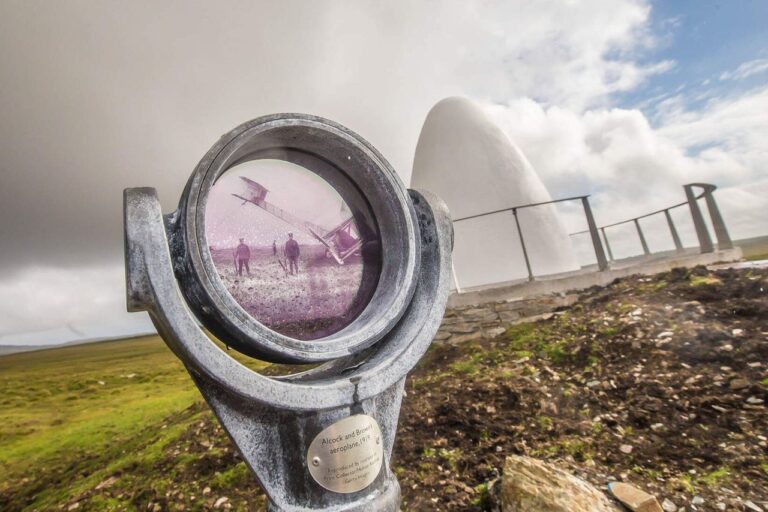
Derrigimlagh Signature Discovery Point
Derrigimlagh Bog stands out as one of the prominent Discovery Points along the Wild Atlantic Way. This remarkable expanse features blanket peat bog and lakes, boasting a wealth of diverse wildlife and plant species. Moreover, it holds historical significance, having been witness to two pivotal events in the annals of international travel and communication.
In 1907, Guglielmo Marconi, an Italian inventor, made history by establishing the world’s inaugural permanent transatlantic radio station at Derrigimlagh. This station became the platform for transmitting the first commercial transatlantic message to Glace Bay, Newfoundland, Canada, heralding a new era in global communication. Remnants of the station, including foundations and workers’ residences, endure as testament to its former glory.
Equally remarkable is the fact that this remote locale served as the landing site for John Alcock and Arthur Whitten Brown in 1919, following their historic non-stop flight across the Atlantic. Departing from Newfoundland 16 hours earlier on June 15, 1919, the duo made their mark in aviation history with their daring feat. A poignant memorial now marks the spot where their aircraft touched down.
Visitors can now traverse a newly constructed walkway through the bog, dotted with interactive information points narrating the captivating history of the area. Through binocular-style information points, observers can peer into the past, with images overlaying the present landscape, offering glimpses into the scenery of the early 20th century.
The walk has been augmented by a number of attractive features which are designed to engage visitors and encourage them to interact with the history of the location. These features include a set of ‘hides’ along the route which offer shelter and house old fashioned crystal radio sets. A tuning fork ‘organ’ is also present along the trail, allowing visitors to interact and experiment with different sound frequencies and a wind reed installation.
In order to help visitors imagine how the site would have looked in the 20th Century, ‘historioscopes’ have been installed. These instruments focus on locations such as the old Marconi buildings and images from the Alcock and Brown crash site. Also present along the Derrigimlagh site is a parabolic mirror which plays on acoustics, reflections and light, alongside a number of artistic interpretative panels which reveal the story of the discovery point
Location
Ballinaboy,
Clifden,
H71 PT98